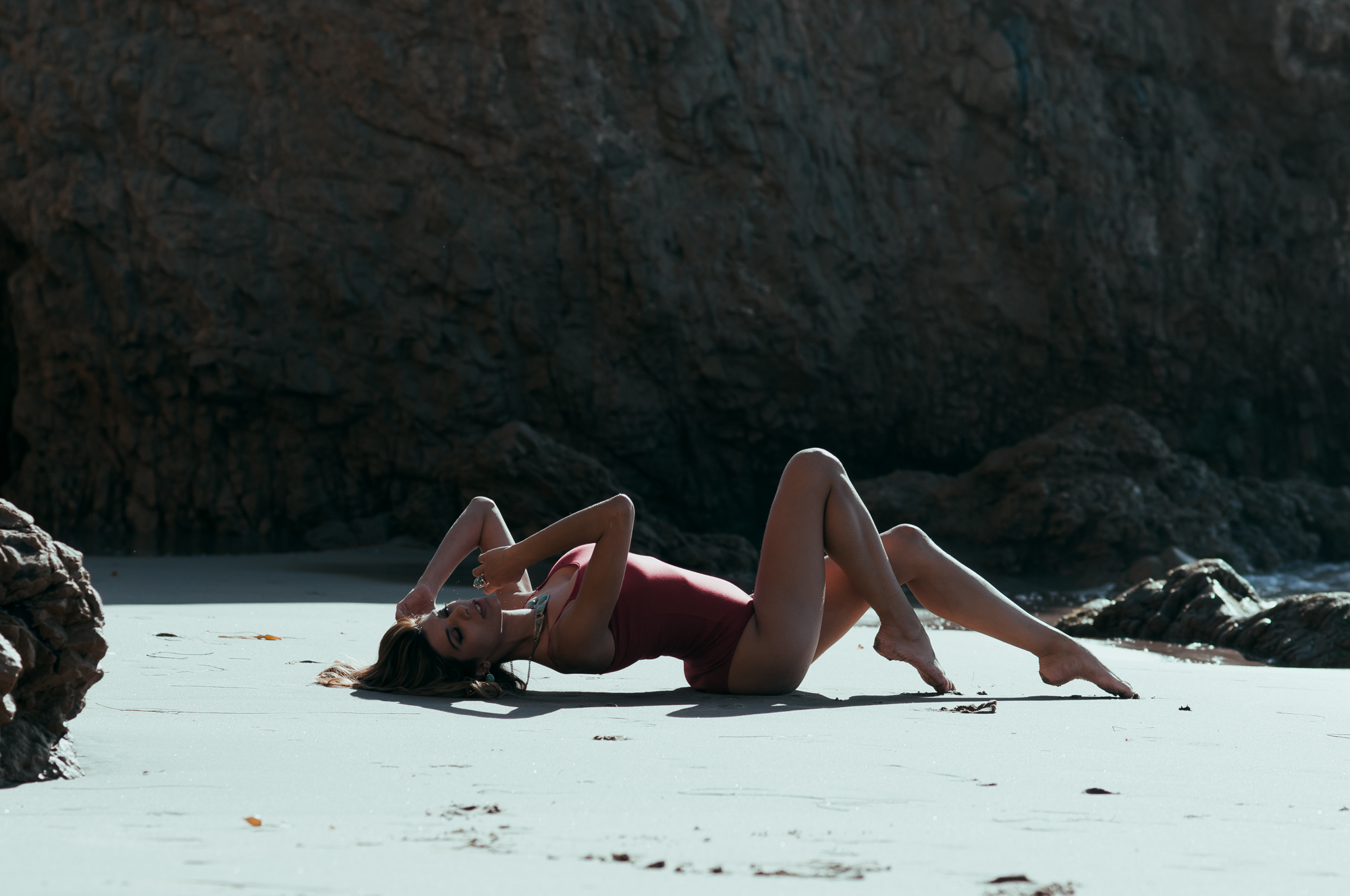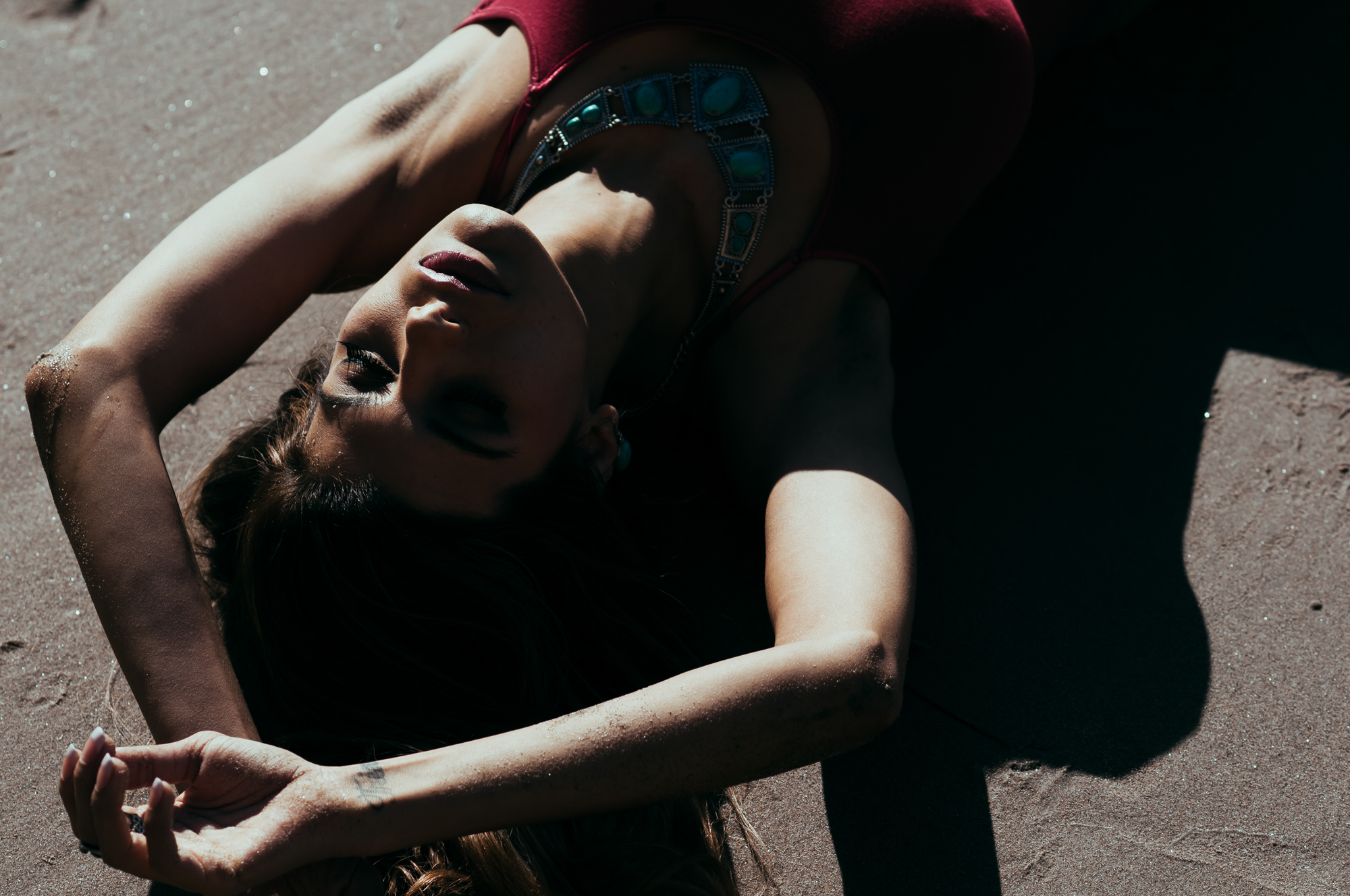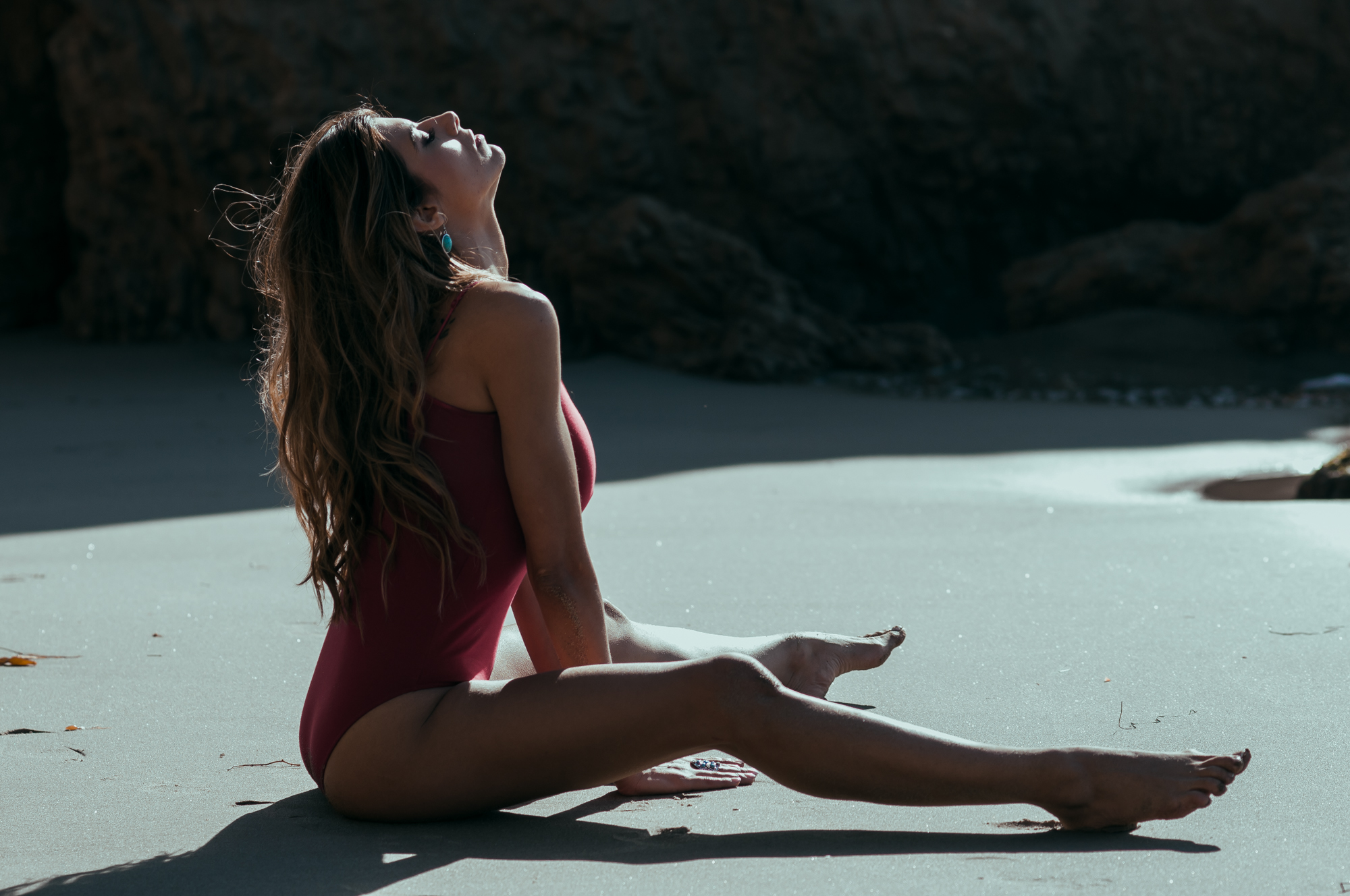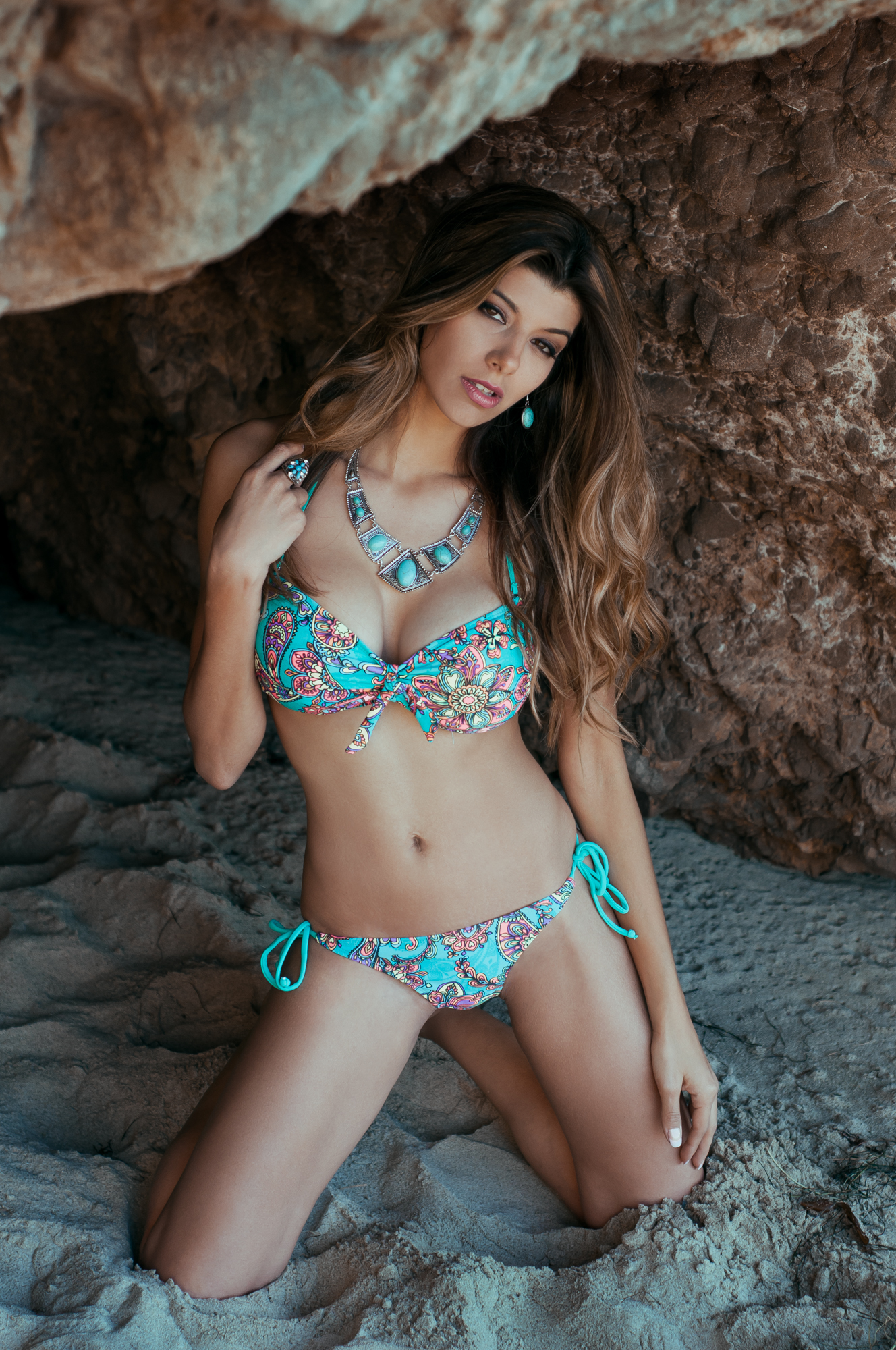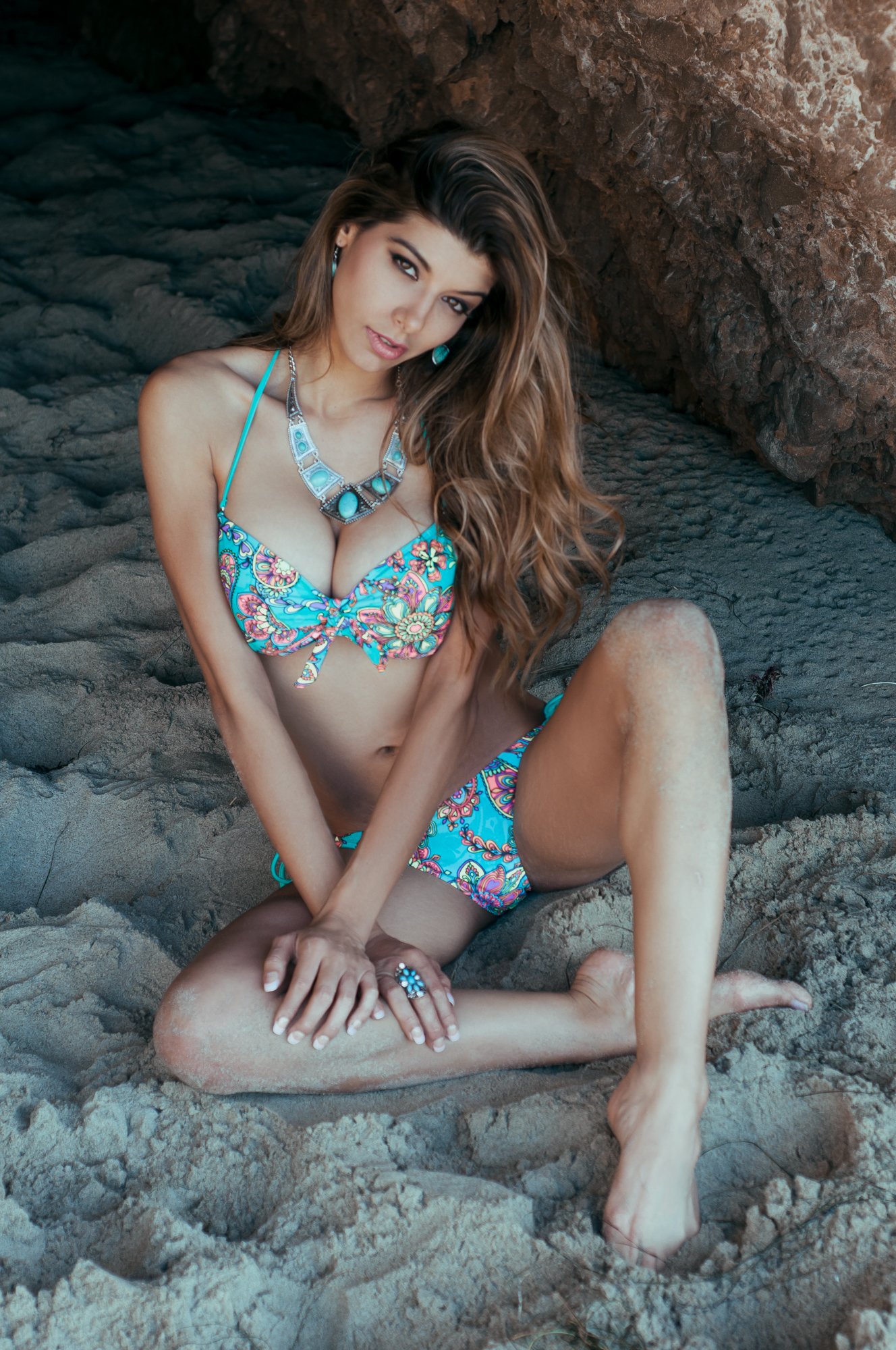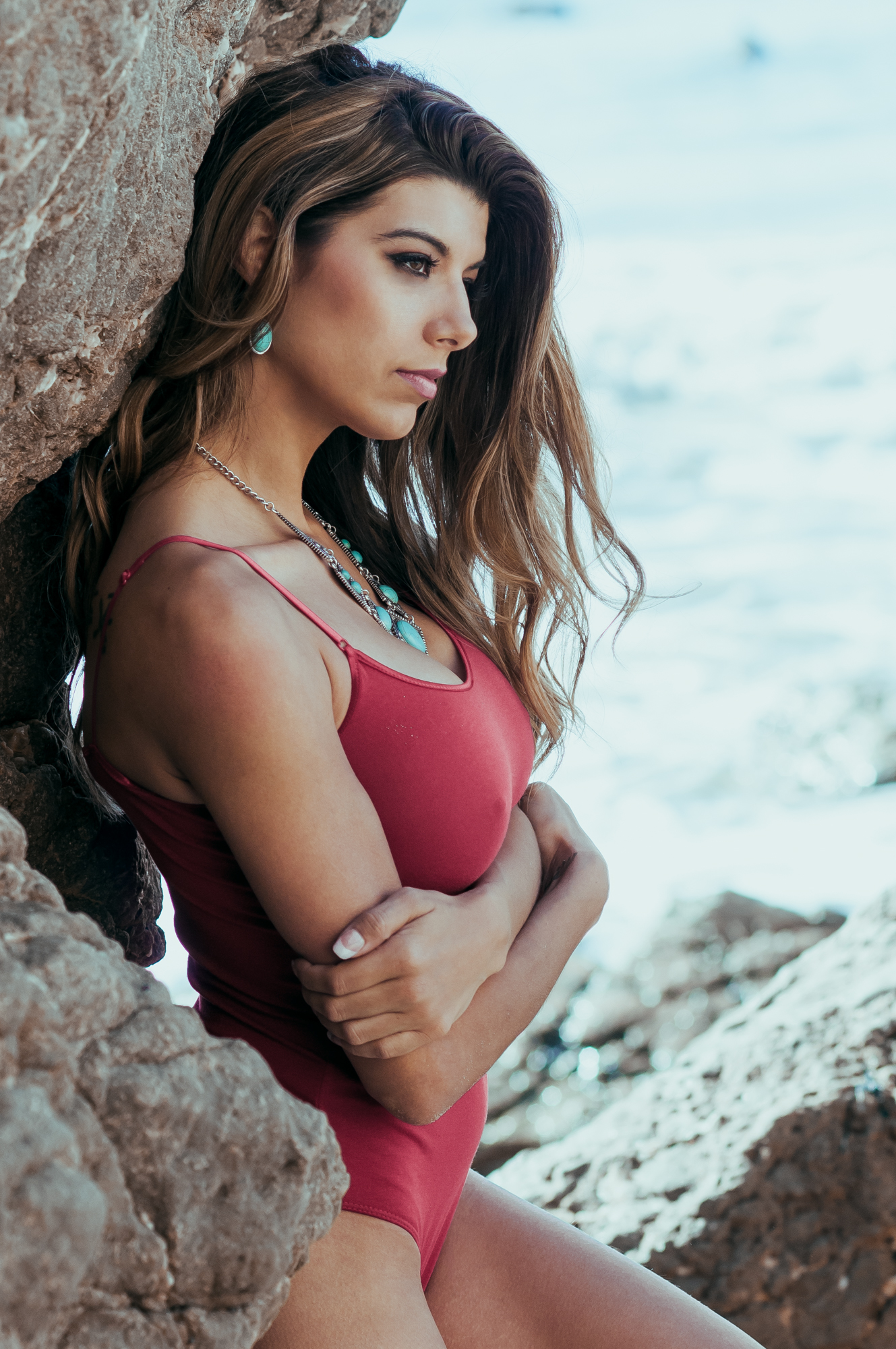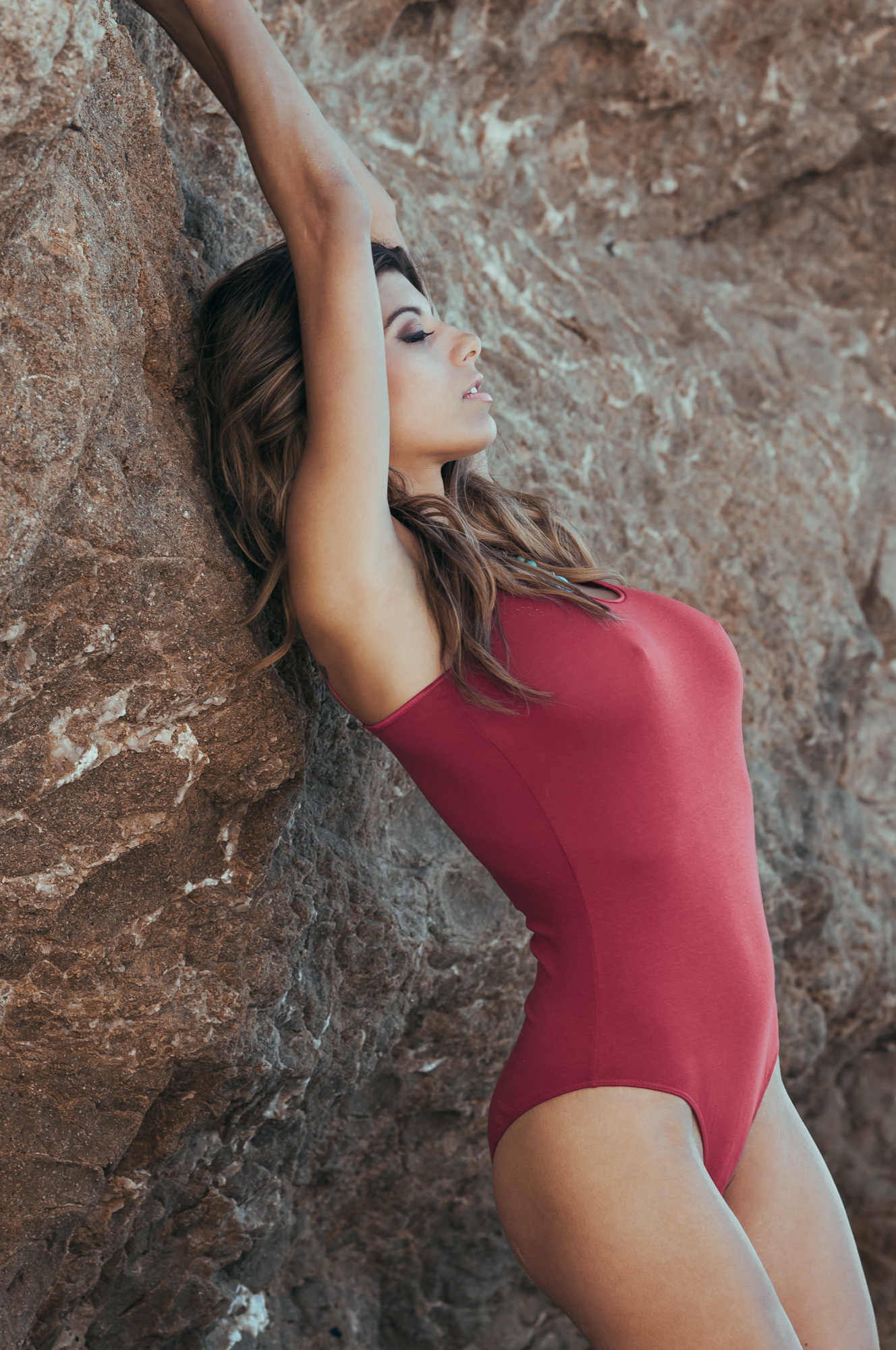“If you’re a diligent photographer, serious about your craft, you’ll learn how to see light. It’s just a matter of time.”
Some time ago, I was lucky enough to shoot with Ashley Salazar, the first Playboy Cyber Girl of the Year. I had about two hours with her before she caught a flight back to Saint Louis. It was late October and we decided to shoot at the beach. For all intensive purposes, this should have been a terrible shoot with no rapport, no MUA, no hair, no assistant, but by using my sense of light, we got some amazing images. Learning how to see light is something that all photographers do overtime. Study as much as you can, but you’ll have to be out in the field to properly develop your photo-senses. No book can prepare you for when you’re thigh deep in the ocean, tripping over rocks, sun at 6 o’clock, and the sea bluffs might add a beautiful bounce to your subject. Positioning your subject is a whole other topic, but goes in hand with learning how to see light (I will save that for a different blog post).
Practicing how to see light is all about observation. For me personally, light is best observed in its natural environment, meaning not in studio. In the studio it’s really easy to mistake how to see light since you know the source and it stays consistent. Outside however, there’s all sorts of light sources: metal buildings, floors, lamps, streetlights, parked cars, signs, everything is a light source. I can’t tell you how often I’m walking around an office complex and stumble across reflected light that ends up just being incredibly beautiful for photos. In the case of these photos, the sand from the very beach we were shooting on added a nice fill to Ashley when I placed her in open shade. The tan color of the sea bluffs also filled her in, giving a nice even light to all the pictures. In some of them, I utilized the direction of the sun to give her a rim light, but keep in mind the sand was still giving some fill.
If you’re a diligent photographer, serious about your craft, you’ll learn how to see light. It’s just a matter of time. Truly, this is what separates the masters from the amateurs. Working at the Palm Springs Photo Festival I’ve spoken to dozens of pro commercial and fine art photographers and one of the biggest points they emphasize is their visualization of light sources. They may not understand it entirely, but they can see it and know when it’s good. Nels Israelson even taught an entire workshop on the subject. Once you’ve accomplished this, you can take a decent picture virtually anywhere.
To practice try hanging out in public places in the mornings and evenings; notice how the light reflects and bounces off walls. Pay special attention to colors and notice how light bouncing is colored by everything it touches. Go outside on rainy days and see what happens to shadows as the sun moves around the clouds. And finally, spend the day in an old structure like a train station or library with lots of windows. Pay attention to the time of day and how the light is coming through the windows. Photography is a life lesson in how to see. As always, let me know if you like this post or if you hated it. Was I too vague? Do you need more examples? Let me know. Always happy to help.

